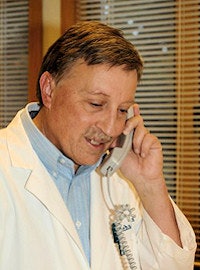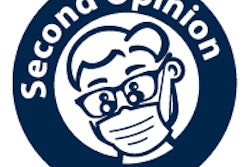
There is no official reporting or tabulation of dental sedation morbidity and mortality. The dental profession sees the occasional "horror story" in sensational media reports and is left to wonder. What are the real risks to the public welfare? Who provides oversight? What are the facts relating to these unfortunate events, and what can the dental profession learn to better protect and serve the public?
 Michael W. Davis, DDS.
Michael W. Davis, DDS.We truly don't know the extent of dental sedation morbidity and mortality. It's in the interest of the public and dental profession to have these epidemiological numbers, and, more importantly, to have an open review of these specific cases. We need to fully access not only what we do right but, in the event of tragedy, we need to learn from clinical errors. While risks always accompany dental sedation, these risks must be minimized.
We have levels of dental sedation beginning at nitrous oxide sedation, to three levels of conscious sedation, to IV general anesthesia. The ADA has established guidelines for each of these sedation levels for clinical training, patient safeguards, and patient monitoring. States, through their respective regulatory dental boards, have statutes, which usually mirror or surpass these guidelines.
Unfortunately, most often there is no periodic monitoring of dental sedation providers by regulatory boards. Only in the event of dental office patient morbidity or mortality is an investigation conducted. We only learned of the Tulsa, OK, oral surgeon who delegated IV sedation responsibilities to auxiliaries after numbers of cases of hepatitis spread through improper infection-control methods. At that point, it's often too late for afflicted patients and their families. Regulation via crisis management is a flawed and dangerous regulatory design.
By contrast, hospital sedation cases are subject to routine review through incident reports and also monthly staff morbidity and mortality meetings and reports. Protocols are continually monitored, reviewed, amended, and updated.
Driving forces
Once or twice per month, general dentists receive marketing proffers for weekend sedation classes. The goal seems focused on increased profits. While I'm certain the majority of the graduates of these motel sedation courses are competent, I'm concerned about a false sense of expertise by a minority of these participants.
“It's in the interest of the public and dental profession to have these epidemiological numbers, and, more importantly, to have an open review of these specific cases.”
On consultation with my auditing colleagues in the dental insurance industry, they're seeing an upswing in claims for payments for the service of dental conscious or IV sedation. Often the doctor submitting the claim is not certified for the level of sedation training for which the insurance claim is billed. Either patients were not being treated to the level of sedation for which they were billed, or they received a degree of sedation by an unqualified provider. Either situation represents insurance and/or consumer fraud or deceit, in an attempt to receive unjustified compensation.
Another driving factor for dental sedation is the public's fear of dentistry. The dental profession often uses the term "dental-phobic." This is probably a misnomer, however, as many patients suffer from a history of abusive dental care or a single highly negative dental experience.
Most states have deplorably low fee schedules for dental Medicaid services. To be fiscally viable with the Medicaid demographic, numbers of dentist providers have turned to conscious sedation. These doctors need to generate high numbers of steel crowns in a single patient visit, as this single service pays out two to three times the amount of a comparable class 2 restoration for half the clinical time. Use of protective stabilization devises (restraints, papoose boards) was formerly rampantly and iatrogenically abused. Parental awareness and legal actions are putting a stop to this once highly prevalent practice. Today, pediatric conscious sedation provides an apparent answer to generate steel crowns and profits under dental Medicaid.
Current legal cases are only today getting to the heart of the widespread and flagrant abuses inflicted on disadvantaged children, who were "beneficiaries" of dental Medicaid. We also have isolated reports for children's dentists, who habitually inflicted violent acts on children to gain compliance. The truth is that numbers in our society suffer from post-traumatic stress disorder (PTSD) as the result of dental experiences. Dental sedation may today provide the only means to treat these patients suffering from dental PTSD.
Numbers of interstate corporate dental service organizations (DSOs) have established systems for doctor production through quota and bonus programs. The U.S. Court of Appeals for the Fifth Circuit's 2008 ruling determined this practice to represent the unlicensed and unlawful practice of dentistry by third-party corporate entities.
Turf wars
A disappointing and disturbing element driving risk to the public safety with dental sedation is the professional turf war. The American Society of Dentist Anesthesiologists (ASDA) has been advocating for dental specialty status for many years. Most dental anesthesiology programs offer a two-year postgraduate certification. Others are even more extensive. The level of advanced professional training is superlative, yet the governing body of the ADA continually rejects specialty status at successive three-year reviews. The public is denied a professional specialty group that would be a strong advocate for standard of care in dental sedation.
Each specialty group from endodontics to periodontics to orthodontics has advanced the standard of care to the benefit of the public in each of their respective specialties. Each specialty has focused continued efforts to enhance and advance methods and materials in their given fields, as well as enhance patient care. A general dentist, or specialist in another field, must minimally meet the standards of the specialty they are working within. Subsequently, every patient's care is improved.
In the next part of this series, Dr. Davis offers some solutions to these issues.
Michael W. Davis, DDS, maintains a private general dental practice in Santa Fe, NM. He serves as chairperson for the Santa Fe District Dental Society Peer Review. He is also active in expert witness legal services.
The comments and observations expressed herein do not necessarily reflect the opinions of DrBicuspid.com, nor should they be construed as an endorsement or admonishment of any particular idea, vendor, or organization.



















